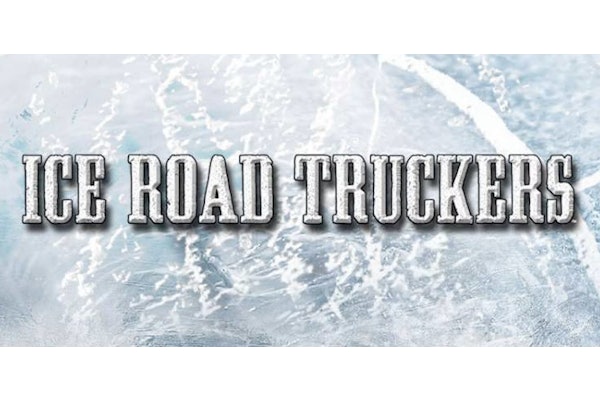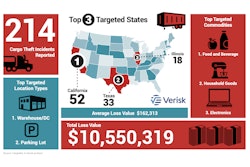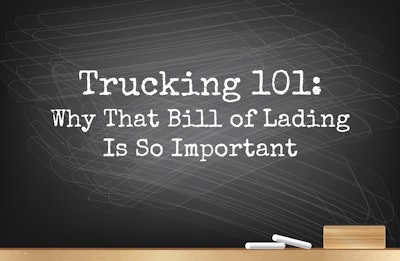
If you’re just getting started in trucking, you may have heard the term used quite a few times already. You may even have already been responsible for taking a BOL and caring for it throughout its journey from shipper and ultimately back to your carrier’s office.
But what the heck is this piece of paper you’ve been told to keep up with?
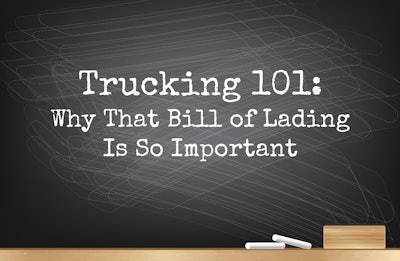
With a Bill of Lading, the driver and carrier take legal possession of the goods being hauled. When freight shifts off the dock and into the truck or trailer, the driver and motor carrier become legally responsible for those goods, and the Bill of Lading is the document making it so.
Inventory management. BOLs play a vital role within the supply chain as a whole and in any given load’s movement. They’re used by freight shippers and receivers to track and manage inventory or raw materials, and by first responders in the event of a crash to assess how to properly treat the scene. They also include seal manifests to show a shipper and receiver that a load hasn’t been tampered with while in transit, and directives for carriers and drivers to follow while hauling a load — such as necessary temperature ranges, if it’s a refrigerated load.
Getting paid for a load. Lastly, and often chiefly, they’re used in conjunction with a load’s Proof of Delivery (POD) document as necessary paperwork for a carrier to invoice brokers or shippers for payment once service is rendered and delivery of a load is completed. Whereas a BOL shows that a carrier took legal possession of a load of freight, the POD then relieves a carrier and driver of that possession once a load is delivered to a receiver or consignee.
 “This will help cut down on drivers’ dwell time, which is a common frustration, and remove friction that drivers face managing pick-ups and deliveries at shipper and receiver facilities,” says Doug Schrier, vice president of strategy at Transflo.
“This will help cut down on drivers’ dwell time, which is a common frustration, and remove friction that drivers face managing pick-ups and deliveries at shipper and receiver facilities,” says Doug Schrier, vice president of strategy at Transflo.
Why freight documents are going digital
In the age of ubiquitous smartphone and tablet use, digitizing these vital freight documents has become an attractive concept for all parties involved in a freight transaction. Here are a few reasons why:
Less busywork, more time to drive. For drivers, automating paperwork processes means no longer having to keep up with hardcopy documents or spend the time managing them — such as taking paperwork to a factoring service or to a carrier’s terminal or office to process. Instead, that can all be managed digitally via apps like Transflo Mobile+ and others. Removing these tasks often allows drivers to log more miles, says Schrier, and thus, earn a higher paycheck. It also helps boost fleet utilization (aka making better use of a fleet’s available time and equipment).
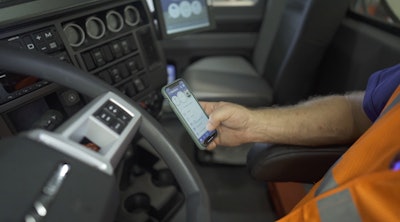 “Ultimately, the Bill of Lading states what the carrier is accountable for." said Schrier
“Ultimately, the Bill of Lading states what the carrier is accountable for." said Schrier
Social distance at the docks. In the age of the COVID-19 pandemic, using eBOLs and ePODs has made drivers’ exchanges with shippers and receivers safer and helped accommodate contactless, socially distant pick-up and delivery at the freight docks.
Reduction of frustrating dwell times. Looking ahead, eBOL and ePOD will further automate drivers’ interactions at shipper and receiver facilities, says Schrier. For example, by leveraging information on an eBOL, an app like Transflo will be able to communicate to a shipper or receiver facility when a driver is a certain distance away from their facility and start a remote check-in process — lining up an open dock for the driver’s pick-up or delivery and transmitting information about the load and driver ahead of time.
“This will help cut down on drivers’ dwell time, which is a common frustration, and remove friction that drivers face managing pick-ups and deliveries at shipper and receiver facilities,” said Schrier.







